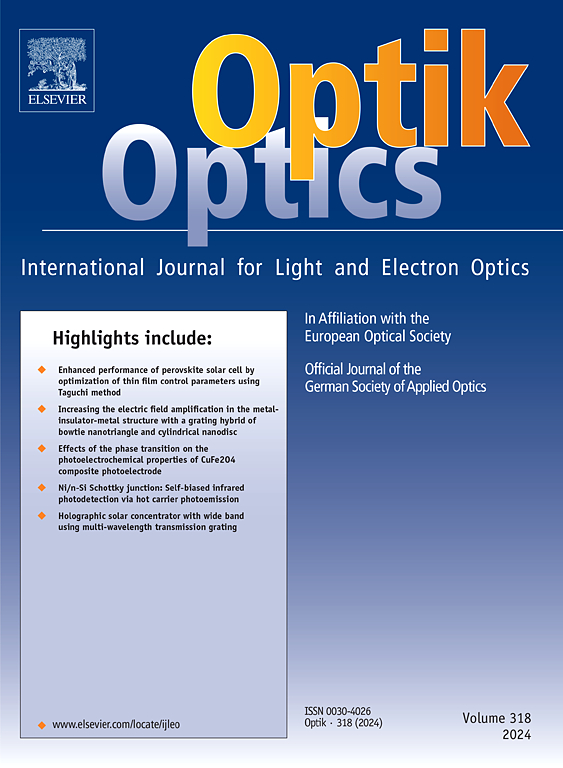Temperature and pressure effects on tunable second harmonic generation in GaAs/AlGaAs multilayered quantum dots
IF 3.1
3区 物理与天体物理
Q2 Engineering
引用次数: 0
Abstract
In this paper, we investigated the effects of applied hydrostatic pressure and temperature on the second harmonic generation (SHG) of a hydrogenic impurity confined in a multilayered quantum dot (MLQD). Using the finite element method (FEM) within the framework of the effective mass approximation (EMA), we have calculated the energy levels and wave functions for different states of a MLQD under external perturbations. Then, we calculated the SHG coefficient using the eigenvalues and their corresponding wave functions. Our main findings show that external pressure (temperature) causes a decrease (increase) in energy levels, thereby enhancing SHG efficiency. This study highlights the potential of electronic environment engineering in MLQDs as an effective approach to modulate and enhance their nonlinear optical properties. These findings pave the way for designing advanced photonic devices, including quantum dot-based lasers and modulators, capable of operating under varying thermal and mechanical conditions.
温度和压力对GaAs/AlGaAs多层量子点可调谐二次谐波产生的影响
本文研究了施加静水压力和温度对多层量子点(MLQD)中含氢杂质二次谐波产生(SHG)的影响。利用有效质量近似(EMA)框架下的有限元方法(FEM),我们计算了外部扰动下GaAs/AlxGa1−xAs MLQD不同状态的能级和波函数。然后,利用特征值及其对应的波函数计算了SHG系数。我们的主要研究结果表明,外部压力(温度)导致能量水平的降低(增加),从而提高了SHG效率。这项研究强调了电子环境工程在MLQDs中作为调制和增强其非线性光学特性的有效方法的潜力。这些发现为设计先进的光子器件铺平了道路,包括能够在不同的热和机械条件下工作的基于量子点的激光器和调制器。
本文章由计算机程序翻译,如有差异,请以英文原文为准。
求助全文
约1分钟内获得全文
求助全文
来源期刊

Optik
物理-光学
CiteScore
6.90
自引率
12.90%
发文量
1471
审稿时长
46 days
期刊介绍:
Optik publishes articles on all subjects related to light and electron optics and offers a survey on the state of research and technical development within the following fields:
Optics:
-Optics design, geometrical and beam optics, wave optics-
Optical and micro-optical components, diffractive optics, devices and systems-
Photoelectric and optoelectronic devices-
Optical properties of materials, nonlinear optics, wave propagation and transmission in homogeneous and inhomogeneous materials-
Information optics, image formation and processing, holographic techniques, microscopes and spectrometer techniques, and image analysis-
Optical testing and measuring techniques-
Optical communication and computing-
Physiological optics-
As well as other related topics.
 求助内容:
求助内容: 应助结果提醒方式:
应助结果提醒方式:


